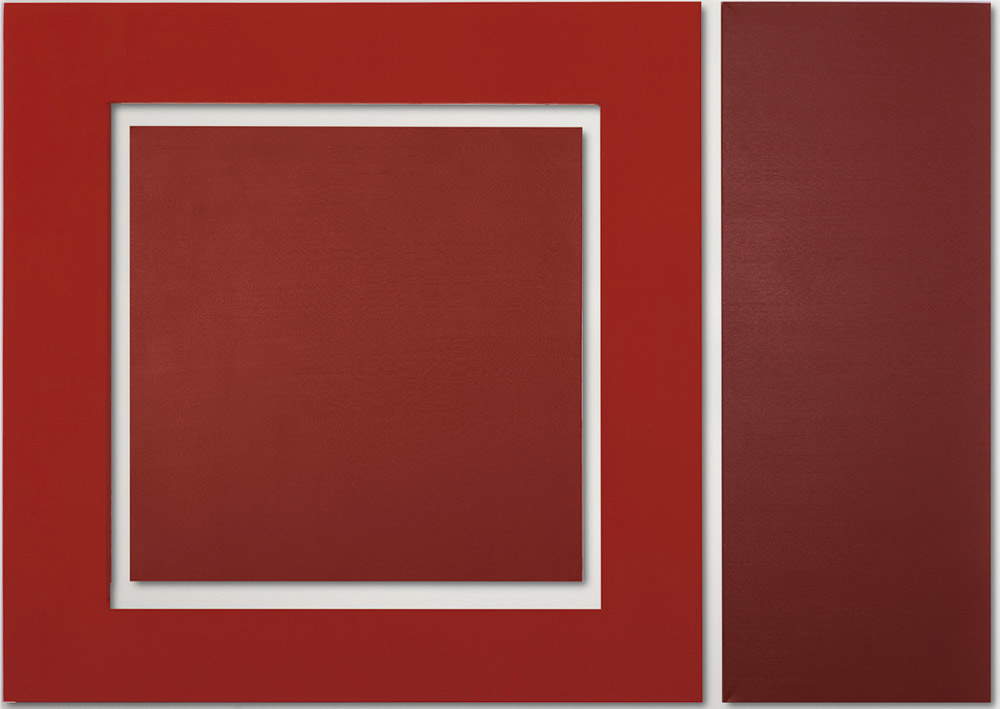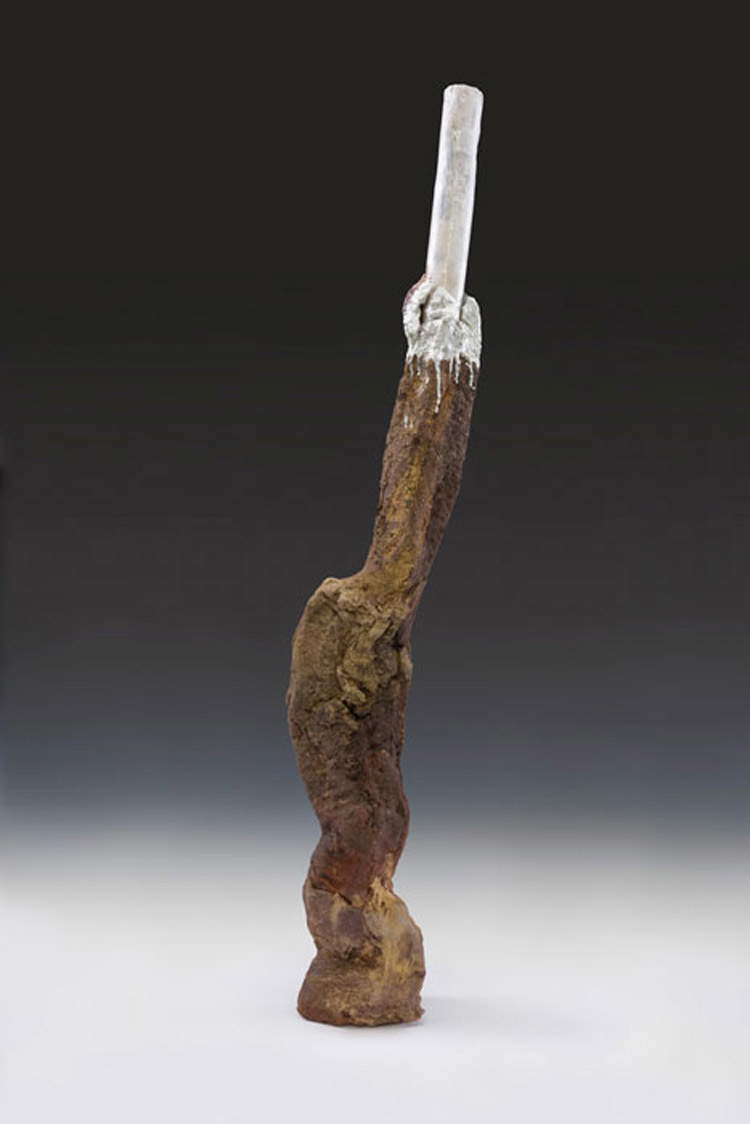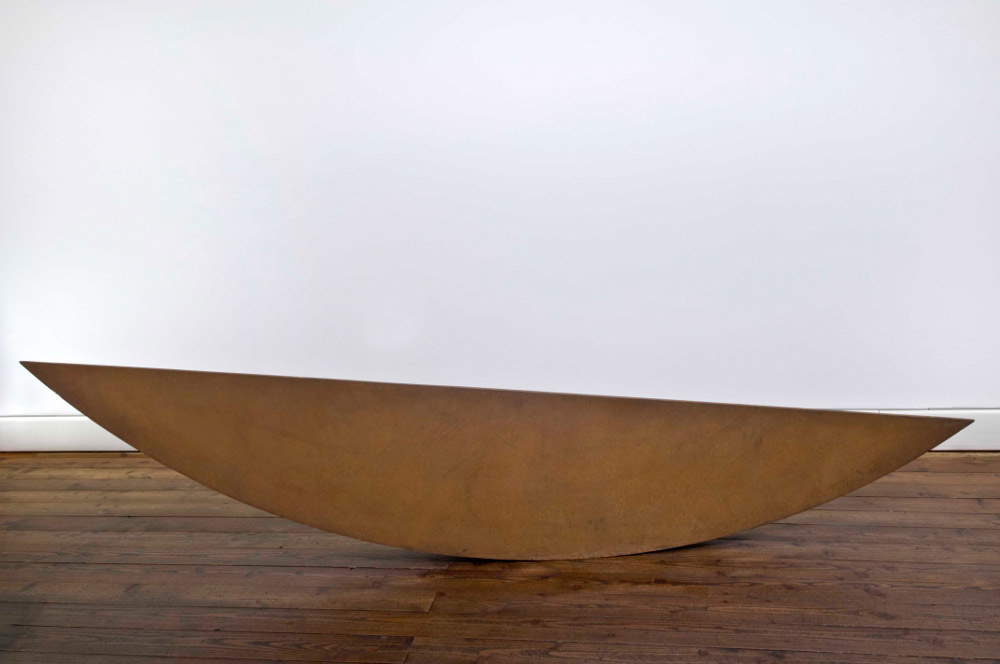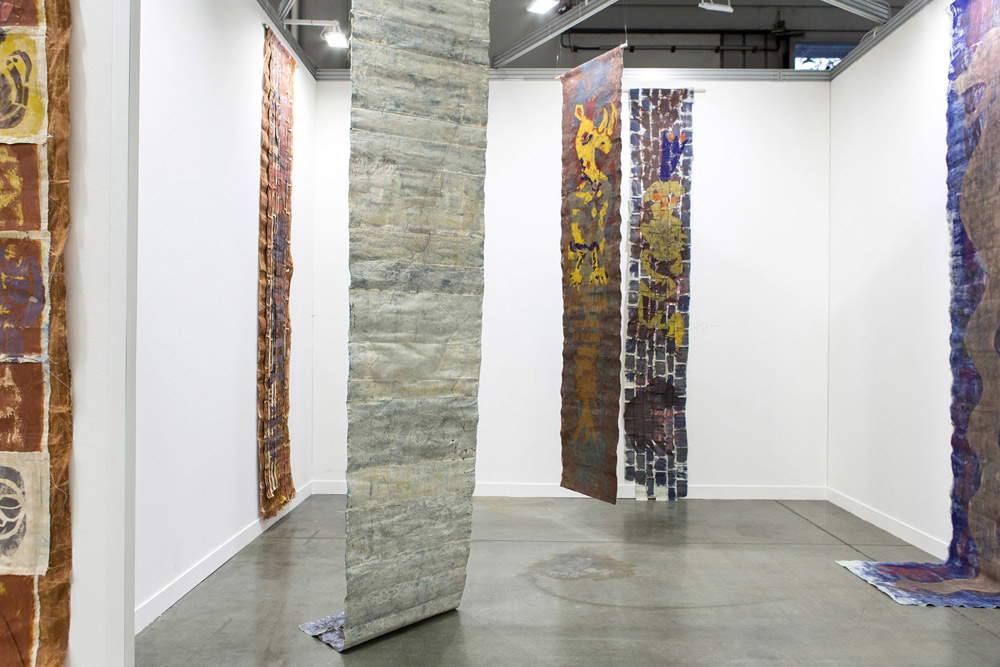The 2018 edition of miart proves to be particularly rich, with an offer under the banner of quality and appreciation by the public and critics. But if we were to identify reasons to visit this 23rd edition of the great international modern and contemporary art market exhibition, what might they be? We give you as many as five. Here they are below.
1. The preview of the exhibition on Palma Bucarelli.
At the Progettoarte-elm gallery in Milan from May 11 to June 29, the exhibition The Golden Nightingale. Reconstructing an Exhibition, which reconstructs the 1973 project of Palma Bucarelli, the unforgettable director of the National Gallery of Modern Art in Rome, for “The Golden Nightingale” award: the exhibition, curated by Angela Madesani, displays works by five protagonists of analytical painting, namely Enzo Cacciola, Paolo Cotani, Marco Gastini, Carmengloria Morales and Gianfranco Zappettini. At Progettoarte-Elm’s booth (Hall 3, Stand D58) it will be possible to see apreview of the exhibition. It is, the organization specifies, the reconstruction of a “forgotten episode whose documentation, kept in the archives of the GNAM in Rome, has been carefully studied and sifted by the Progettoarte Elm gallery and curator Angela Madesani: the formal invitations that Bucarelli sent to the artists, the correspondence between the Cypriot and Italian institutions, and the shipping documents for the works, have helped to reconstruct the affair and restore all its lively atmosphere in the Milan exhibition venue.”
 |
| Enzo Cacciola, 9-11-73 (1973; industrial painting on canvas, 105 x 148 cm) |
2. Gagosian’s debut and dialogue with Mazzoleni
New York’s Gagosian Gallery, one of the most famous and important in the world (artists such as Roy Lichtenstein, Robert Rauschenberg, Willem de Kooning, Jean-Michel Basquiat, Cy Twombly, Richard Serra, Barnett Newman and many others have passed through its halls), is exhibiting for the first time at miart, with a booth devoted entirely to Sterling Ruby (Bitburg, 1972), an American artist who, as specified on the American gallery’s website, “stands out for his versatility in aesthetic strategies and works on a variety of materials while maintaining a constant tension between a multitude of elements. His work confronts themes related to violence and societal pressures, autobiographical subjects, and art history.” Sterling Ruby’s works are compared with those of Alberto Burri (Città di Castello, 1915 - Nice, 1995) exhibited instead by Mazzoleni’s booth, as part of the Generations section that compares works by artists of different generations. The one between Ruby and Burri, in particular, is a surprising dialogue around materials and their meaning.
 |
| Sterling Ruby, Cloven Hiker (2017; ceramic, 165.7 �? 27.9 �? 26.7 cm) |
3. Homage to Mauro StaccioliDisappeared on New Year’s Eve, Mauro Staccioli (Volterra, 1937 - Milan, 2018) was one of the most interesting sculptors of the second half of the 20th century, recognized for his “sculpture-interventions,” works of monumental dimensions that stand in relation to the natural environment that hosts them. At miart, Florence ’s Galleria Il Ponte pays tribute to the great artist with aproject entitled Lo spazio segnato, which the public will find in Hall 3, Stand D48. Produced in collaboration with theMauro Staccioli Archive Association, it is a monographic exhibition displaying five works, from 1969 to 2009, and a selection of materials that accompanied its ideational path. “Mauro Staccioli,” wrote Maria Laura Gelmini in 2008, “works following a peculiar procedure that responds to the founding need of his thought: to read the place in the light of history and to leave an indicative sign in the wake of this reading. A conscious choice is being defined in the artist at the end of the 1960s: politically committed, he feels art as a dutiful response to the us, a work that is part of the debate. His sensitivity to the socio-historical environment emerges in Volterra in 1972: the place, the urban space, the building, nature, have their own history, their own breath, bear the imprints of ancient events or socio-environmental situations.”
 |
| Mauro Staccioli, Untitled (2001) |
4. Site-specific worksThe 2018 edition of miart is also distinguished by the high presence of site-specific works displayed in the stands of the galleries present. These are works exhibited in the On demand section curated by Oda Albera. Of particular note are the works by Admire Kamudzengerere (Harare, 1983) exhibited at the booth of London’s Tyburn Gallery (a series of panels reminiscent of the art of Zimbabwe, the artist’s homeland), the work by Francesco Arena (Torre Santa Susanna, 1978) for the Raffaella Cortese gallery that reflects on the concept of distance, and again the works of Johannes Wald (Sindelfingen, 1980) brought to miart by Rita Urso - artopiagallery, which intend to “invert” the very process of sculpture, reversing the role of transformation, shaping marble and bronze according to methods directly contrary to those of tradition.
 |
| Tyburn Gallery’s booth |
5. Design
Miart is the only market exhibition in Italy that has a section reserved for design: therefore, for those who love design this is a must-attend event. In the Object section the public can find fourteen galleries dedicated to promoting experimental and limited-edition design, and it will also be possible to find historical collectibles. Nordic design by Nanna Ditzel, Leonor Antunes, Tove and Edvard Kindt-Larsen, Finn Juhl, and Nico Ihlein (at Galleri Feldt), Italian classics such as Ettore Sottsass, Marco Guazzini, and Ernesto Basile (at the Luisa Delle Piane booth, who gathers these objects in a special installation), as well as icons by Gio Ponti, Carlo Mollino and Franco Albini (from Rossella Colombari), some rare Fornasetti screens (from Luciano Colantonio): there are objects that will satisfy the most discerning collectors.
 |
| Galleri Feldt’s Nordic Design. |
Warning: the translation into English of the original Italian article was created using automatic tools. We undertake to review all articles, but we do not guarantee the total absence of inaccuracies in the translation due to the program. You can find the original by clicking on the ITA button. If you find any mistake,please contact us.